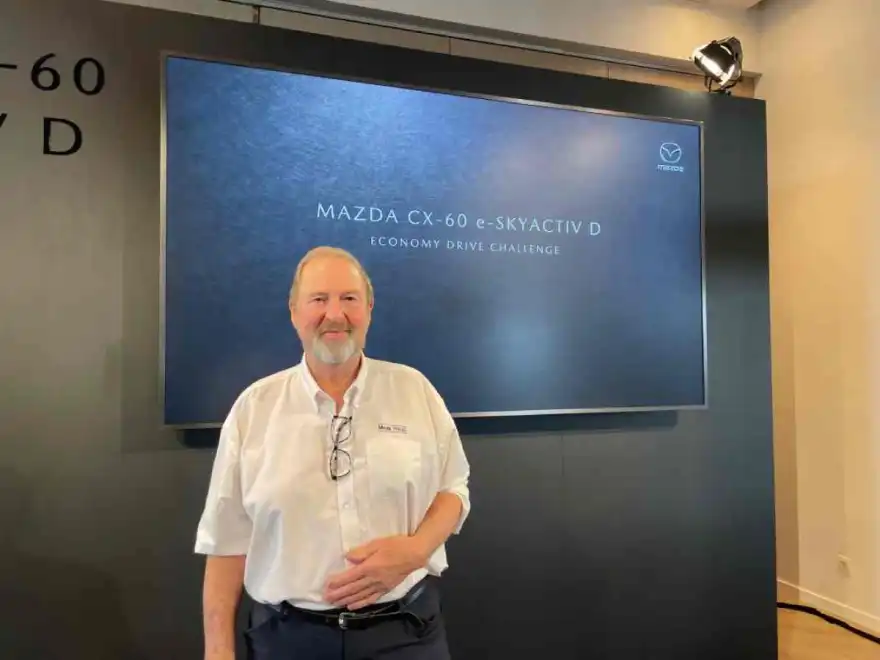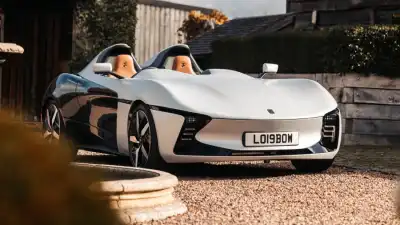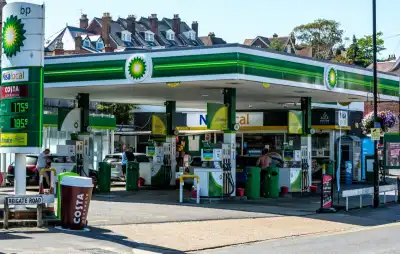
There’s a whole host of ways to eke out the most miles from every litre of fuel and most of them really boil down to common sense.
But with fuel prices still burning a hole in our pockets, we thought we would delve a little deeper and ask an expert in the field of mpg challenges.
Yes, it’s true that a careful driving style, watching your speed, lightening the load of any excess luggage and checking tyre pressures, along with general car maintenance, can all result in improved efficiency.
But we caught up with Mark Hales, a writer, racer, pilot, engineer and driving coach, to see what additional advice he could offer in a bid to conserve fuel whilst still enjoying a decent driving style. After all, who wants to crawl along at a snail’s pace to save 50 pence!
Mark, 74, has more than 200 wins under his belt in a racing career that spans almost 50 years. He is a keen pilot with more than 4,000 hours logged in 40 different types of aircraft and he has an engineering career that has seen him working on developing automotive, race car, motorcycle and aviation projects. In fact, he is currently developing a diesel powerplant for a Jodel 1051 four-seater aircraft which is now undergoing a test programme for official approval.
But, perhaps more importantly, we wanted to delve into his depths of knowledge about car testing, driving technique and coaching that has played a huge part in Mark’s career.
We had the opportunity to sit down with Mark at the launch of the latest Mazda CX-60 which was being tested with a new 3.3-litre, straight-six diesel engine. Interesting to see some manufacturers are bucking the trend and still investing in ICE powertrains.
Mark had set a 200km route to fully test the car on a variety of roads covering every eventuality, including mountain climbs, motorways, plus stop, start city driving. We, on the other hand, were asked to attempt to record a decent mpg figure. We did that with most people averaging well over 50mpg and that was without trying too hard in the process.
But maybe we could have done even better if we had taken on board his driving tips to improve fuel economy before we set off.
So, we asked what we could do better in our day-to-day driving. He said: “Planning ahead is vital. If you’re going to turn off and you’re rolling along an A road or motorway at about 70mph and you get to the exit point and have to brake really hard to make the turn-off, you are wasting fuel. If, on the other hand, you come off the gas early enough you will be at the correct speed to pull off the road. You won’t have to use the brakes. Just lift off the accelerator that bit earlier and it’s smoother and more fuel efficient.
“On the other hand, if you are joining a motorway, it’s really easy to plant the gas, get up to speed and then come off the pedal. If you gently coax the engine though, it doesn’t take any more time but it saves huge amounts of fuel. Just try not to be heavy-footed on the accelerator and use the brakes as little as possible.
“The absolute golden rule though is to pick your gaze up. Look up and look ahead. We all say we do, but as soon as we are busy or distracted, the gaze comes right back. If you can see there is a thicket of traffic ahead, if you lift off the power you can roll up to it. What most people do is keep driving and then press the brake pedal.
“A lot us go for the brakes just for reassurance, but if you can keep the momentum on board and let the car roll through a corner or through a roundabout because it’s clear, then your momentum is preserved and you don’t have to keep hitting the power.
“If you find that you are using the brakes harder, it’s normally because you are in a hurry.”
And driving styles need to differ according to the type of road we are on, as Mark explained: “The problem with motorway driving is that other motorists get in the way. So, if you leave a gap, somebody will fill it - usually by overtaking on the inside. So you end up going further and further back.
“If you can be in a train, it punches a hole in the air. If you can stay far enough back it will use less fuel. This is where slipstreaming comes in. We have to be a little bit careful as anyone coaching driving techniques has to maintain safety at all times. If you are sitting behind a truck, then the truck breaks the air. It’s a technique used in motorsport, but obviously you must not get too close. A slipstream will work from an articulated lorry even if you are ten car lengths behind it which would be a safe distance.
“You will also go slightly slower as the truck will be doing less speed. You must be careful, but it is a benefit especially if it’s really windy as the truck makes a big hole in the air. Therefore your car doesn’t have to break through the same volume of air. It’s like the parting of the Red Sea.
“On twisting lanes, if you want to save fuel, hoofing it then braking is not the way to do it. If you can find a speed where you use as little power as possible and maintain it, that is the best way to preserve fuel.
“And if you can see there is nothing coming then straighten out the road. Always take a line if you.”
This means to find a straight driving line rather than going round every twist and turn sticking to your side of the road. But this is clearly only achievable if there are no oncoming vehicles.
Mark said: “Straighten out the bends as long as you can see far enough ahead. It gives you a better view and you have less tyre drag. You will keep the momentum going as you have made the corners less tight.
“Once again, we come back to looking ahead and bringing your gaze up. If you are distracted or busy, it’s a normal human instinct to bring the gaze back. You only look up if you don’t feel threatened by factors such as going too fast. The more you can see the more confident you will be.”
Speed is another area to look at when trying to conserve fuel. And sometimes gunning it down a motorway doesn’t really make that much sense.
Mark said: “If you cruise at 50mph rather than 70mph and look at the fuel consumption, your range will increase due to the aerodynamics. You have to push the car harder through the air and the extra tyre drag at speed really impacts on the efficiency. So, just driving a little slower makes a huge difference, although I know people will just complain about the time.
“But if you stick at about 50mph on a motorway rather than 90mph, you actually get there about five minutes later. You don’t gain anywhere near the time back that people think.”
With lots of advice to go away and think about, it seemed there was one very clear message from Mark and that was to stay focused and plan ahead. He added: “Keep your gaze up. We don’t look up enough and generally tickle the accelerator. Instead, we tend to plant it and then look where we’re going and then manage it by having to brake hard. This is anything but efficient. Simply look and plan ahead.”



